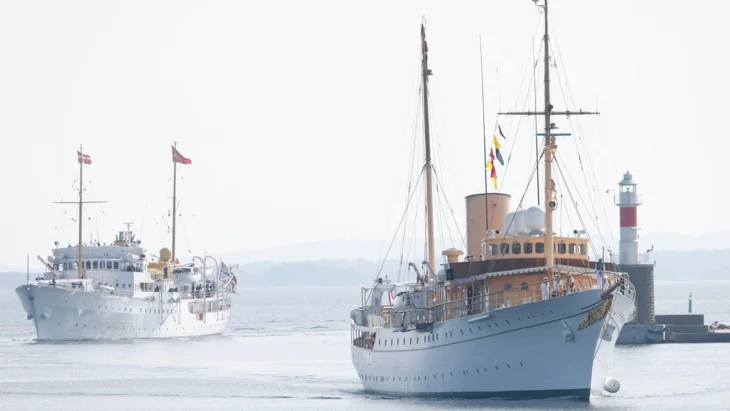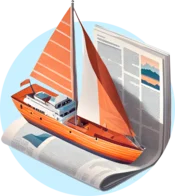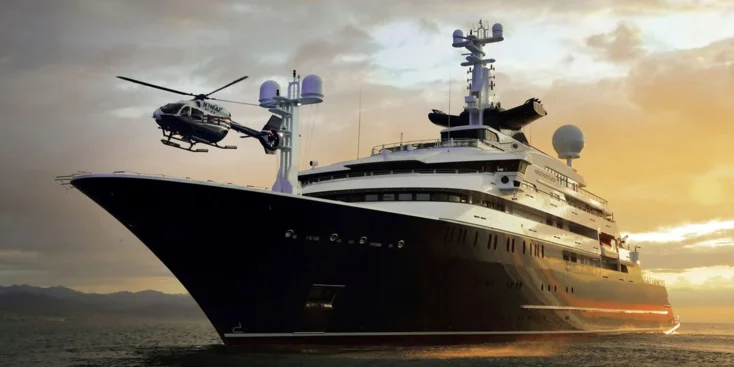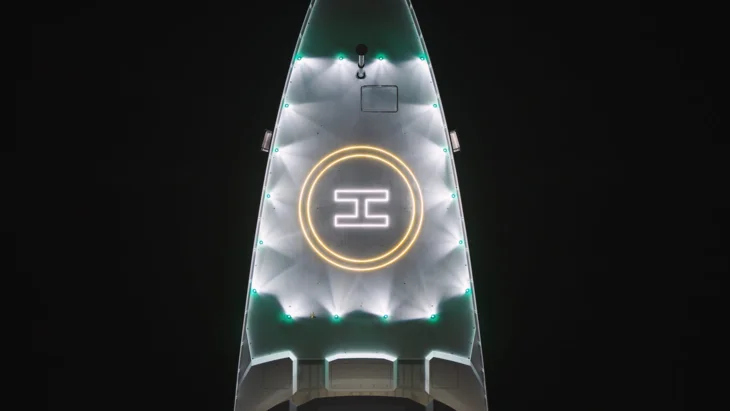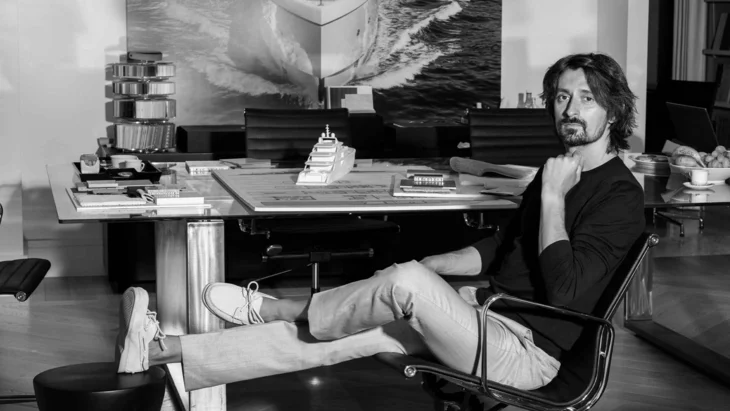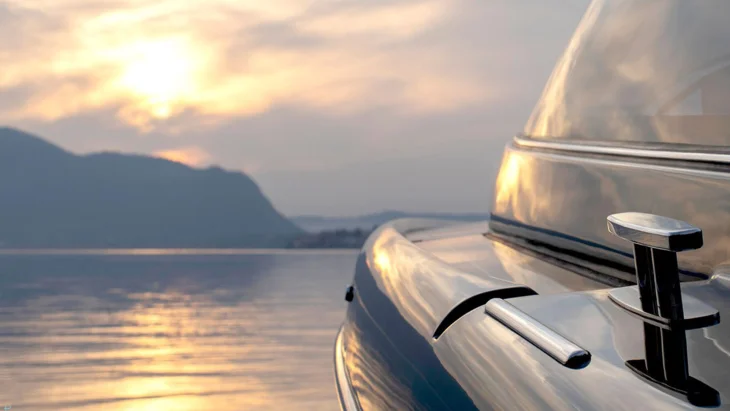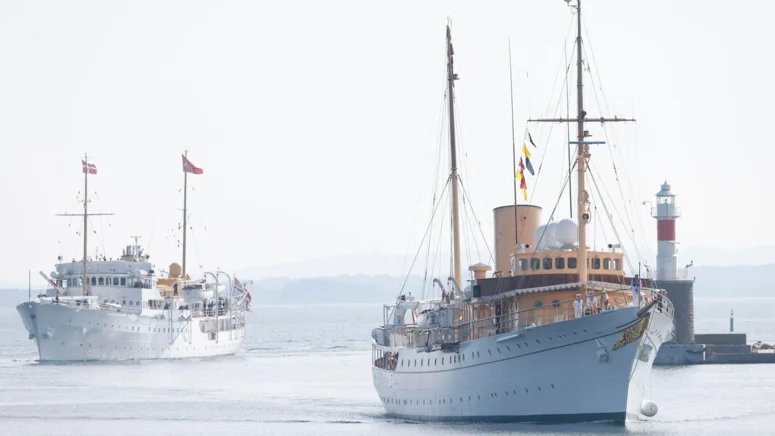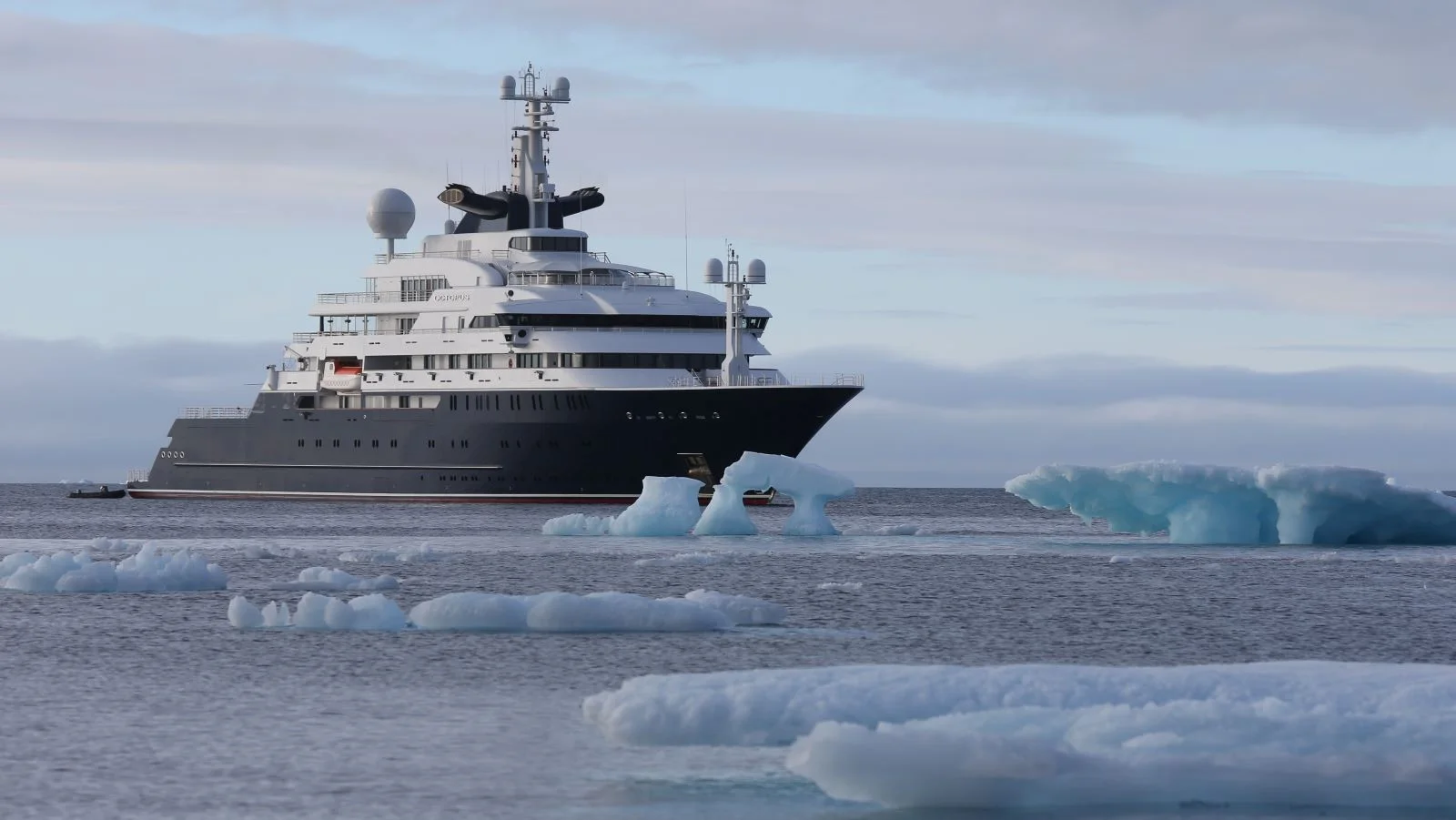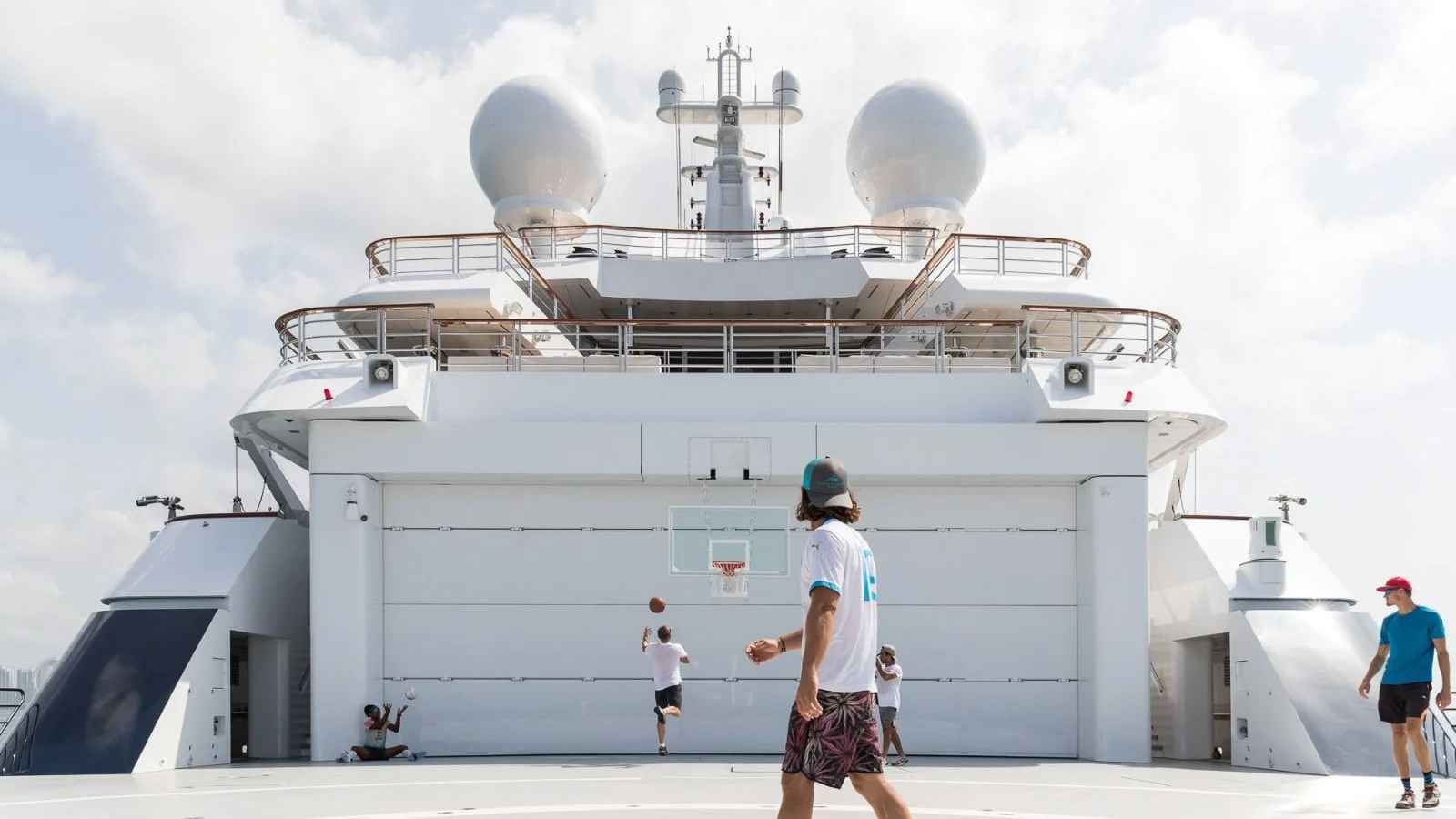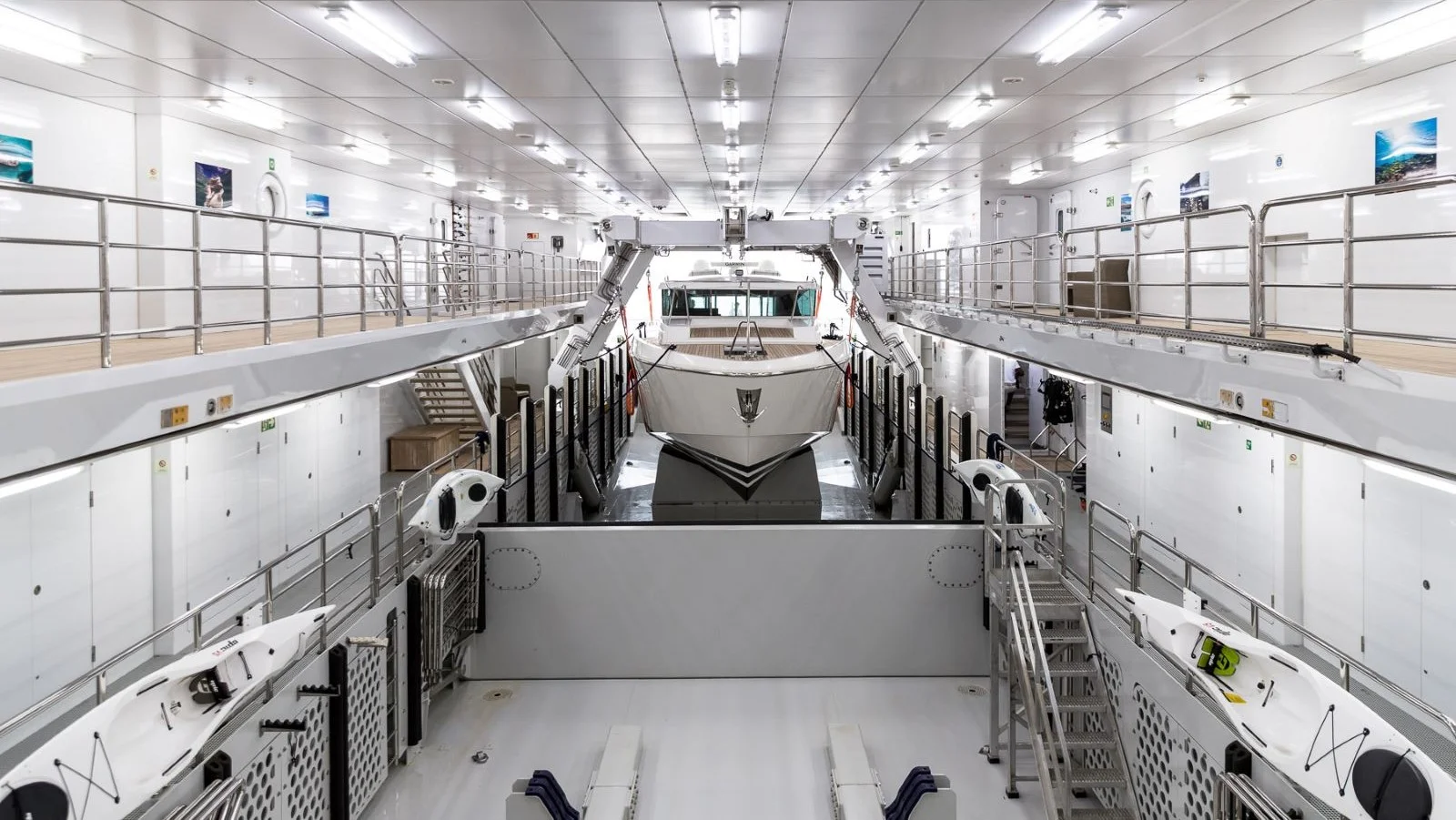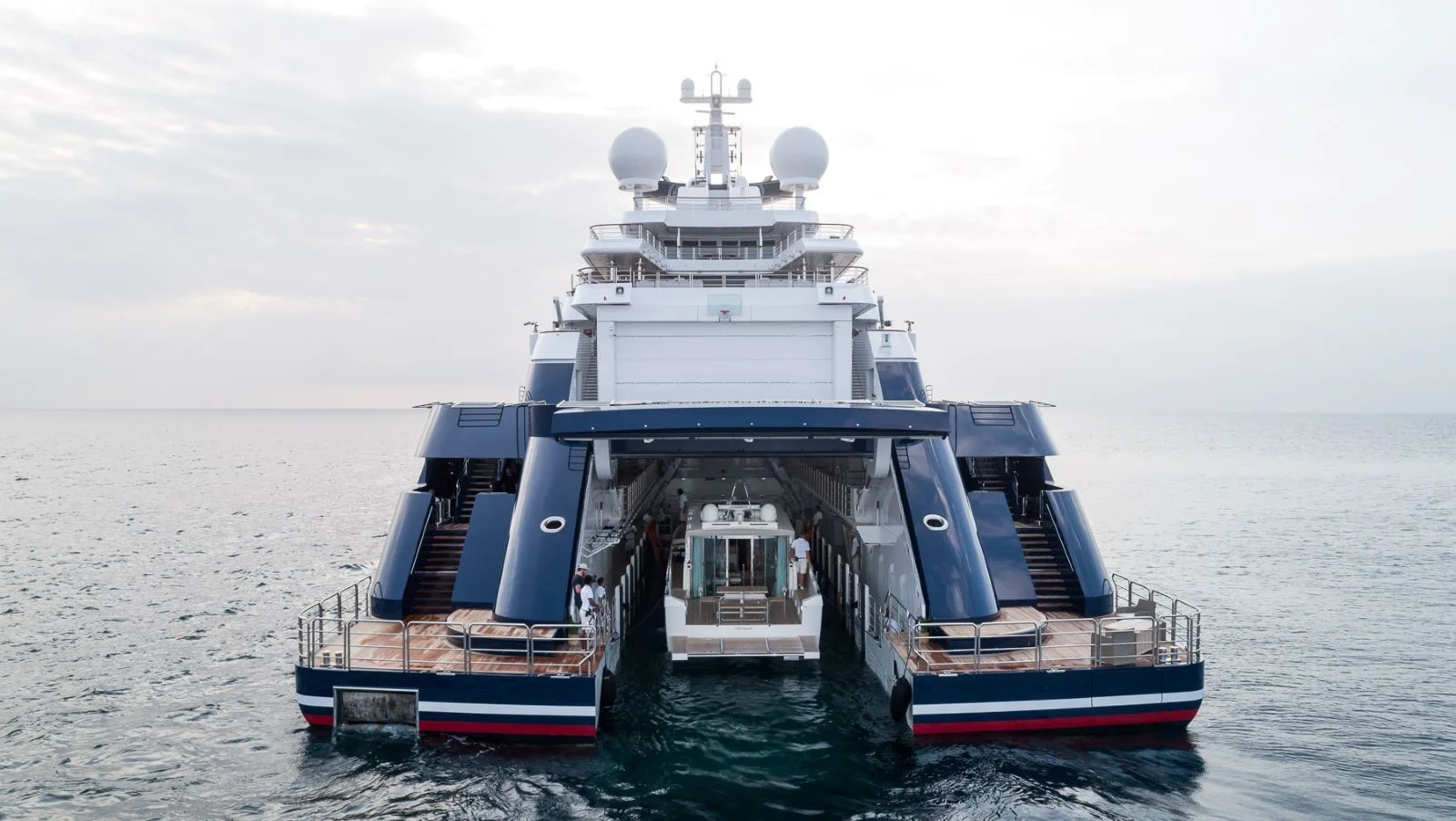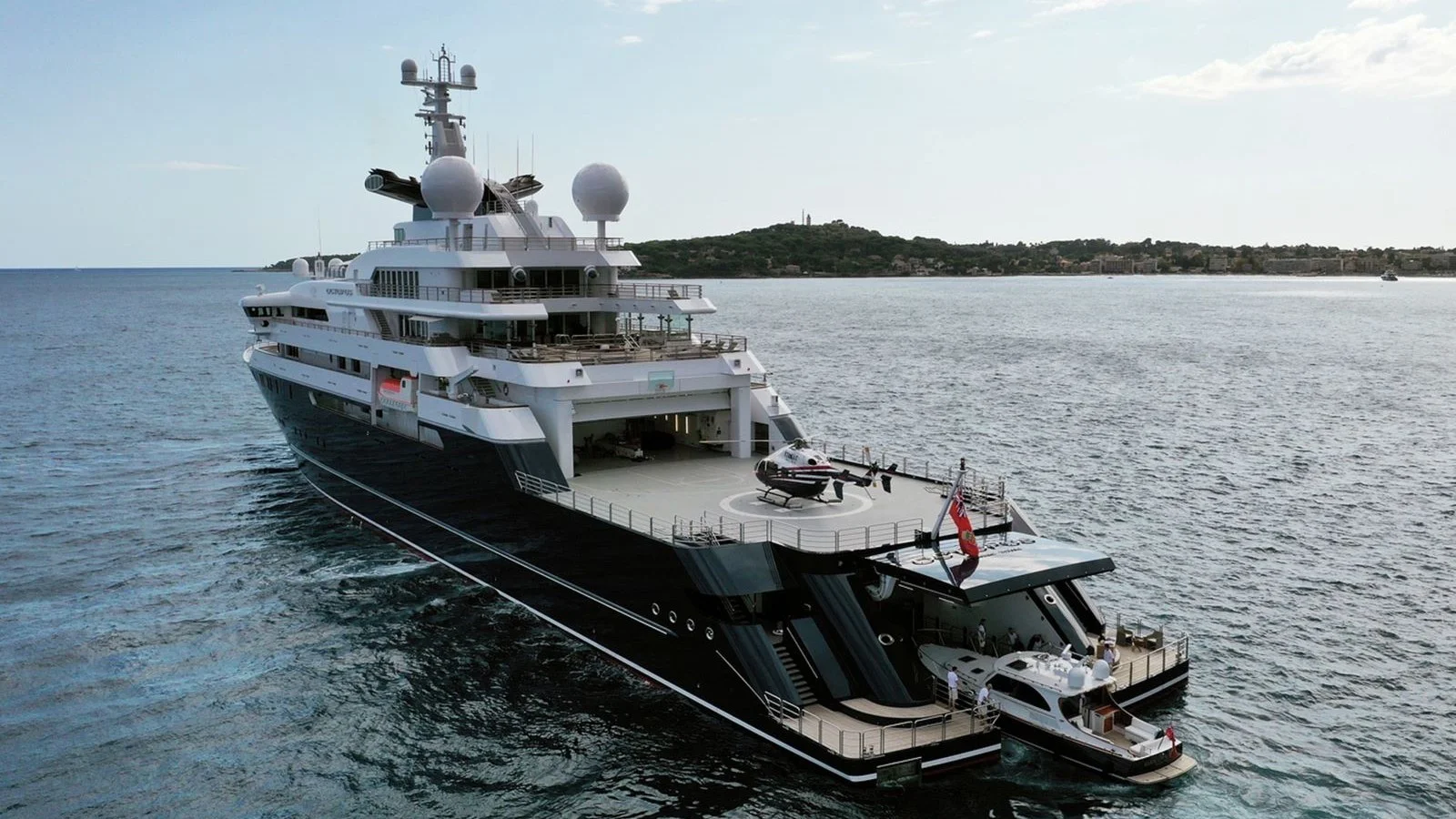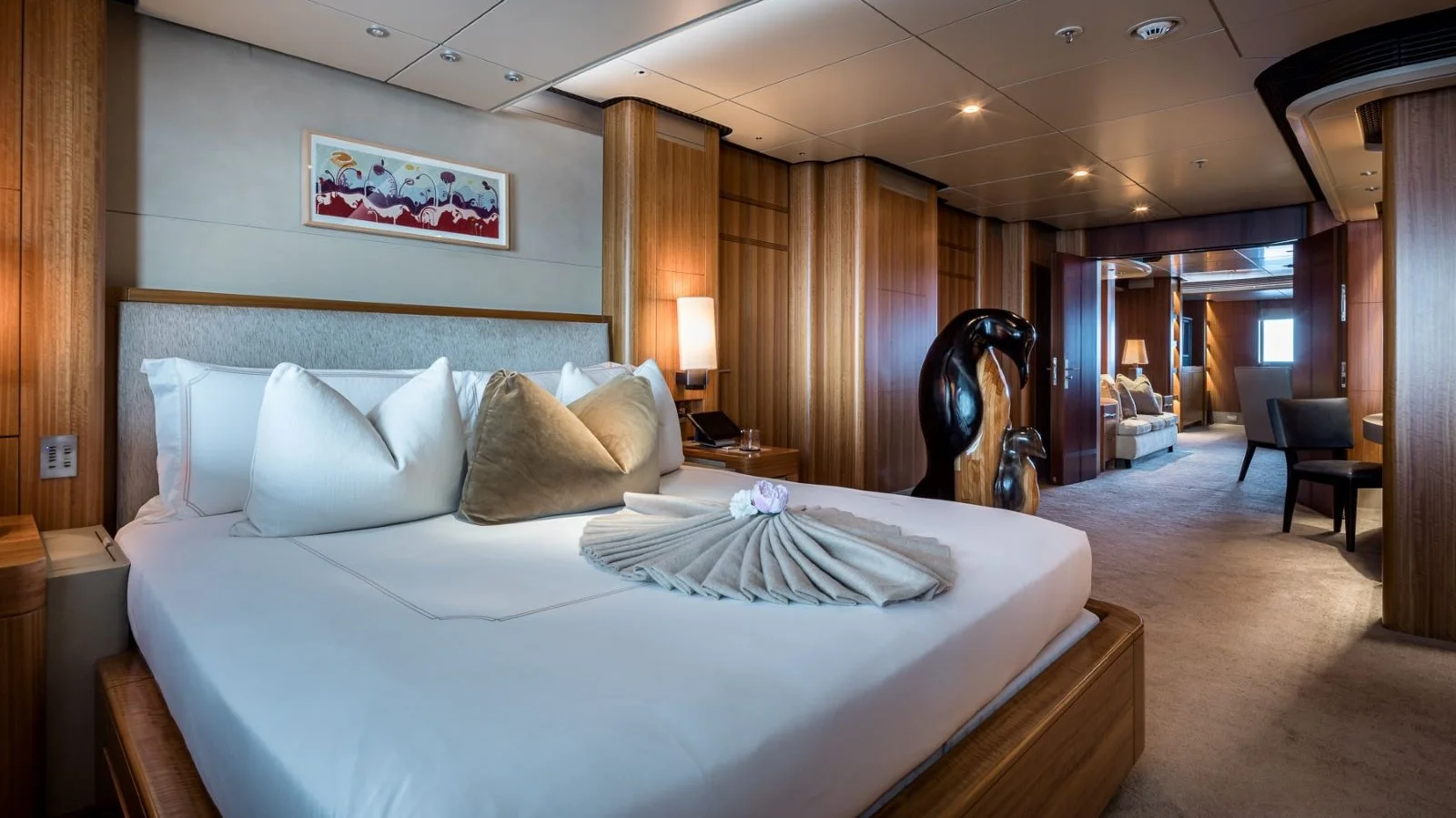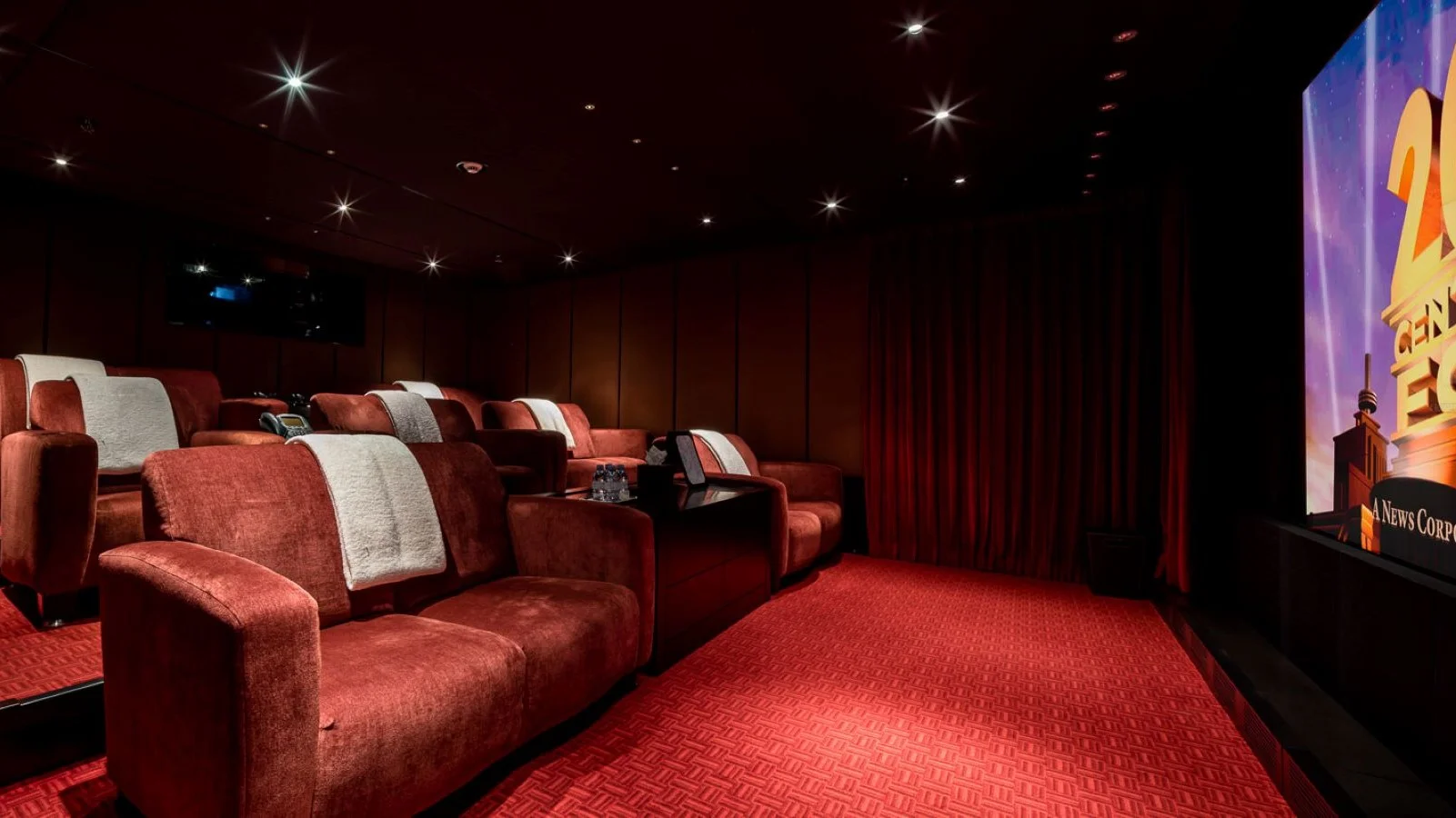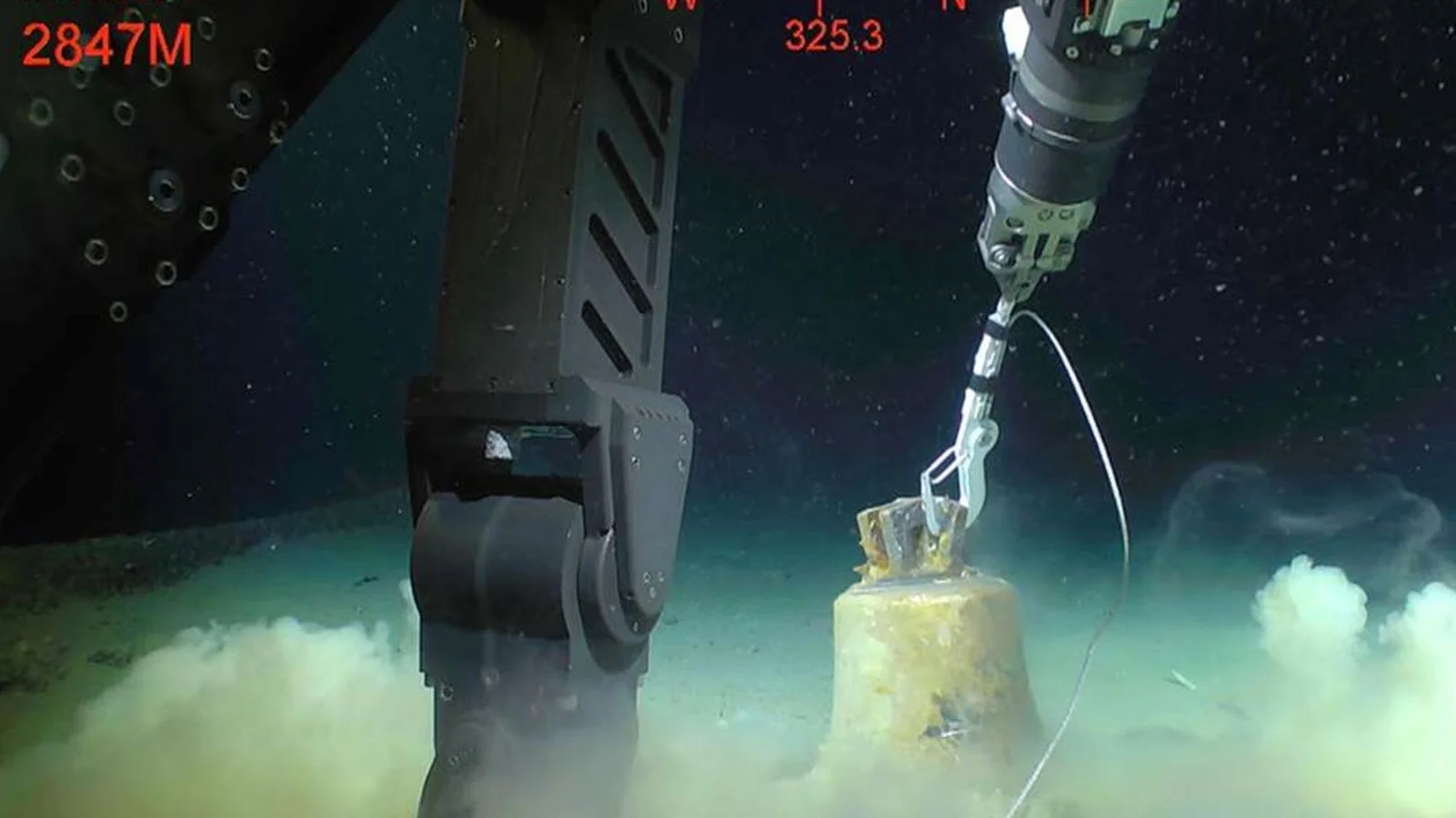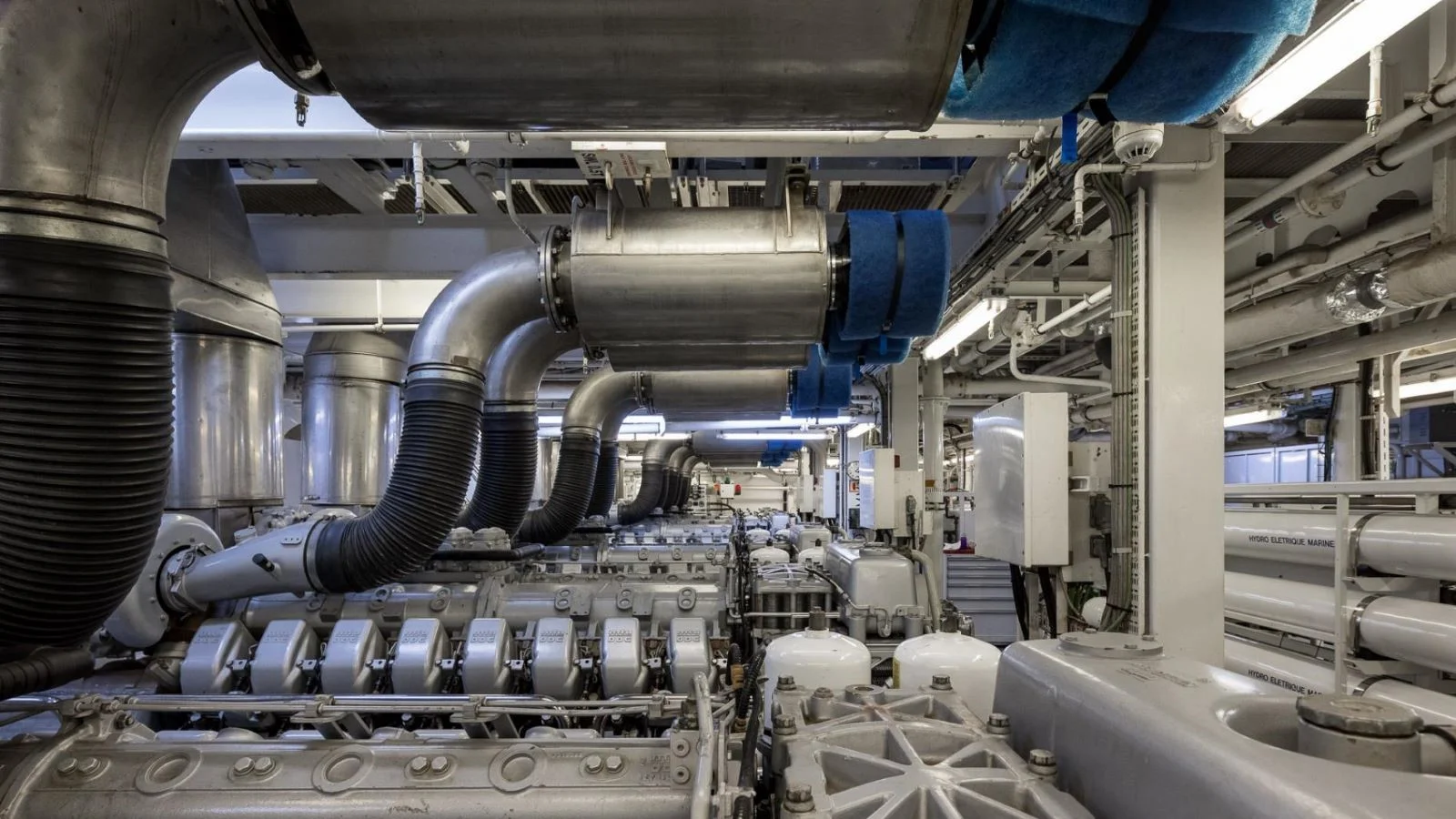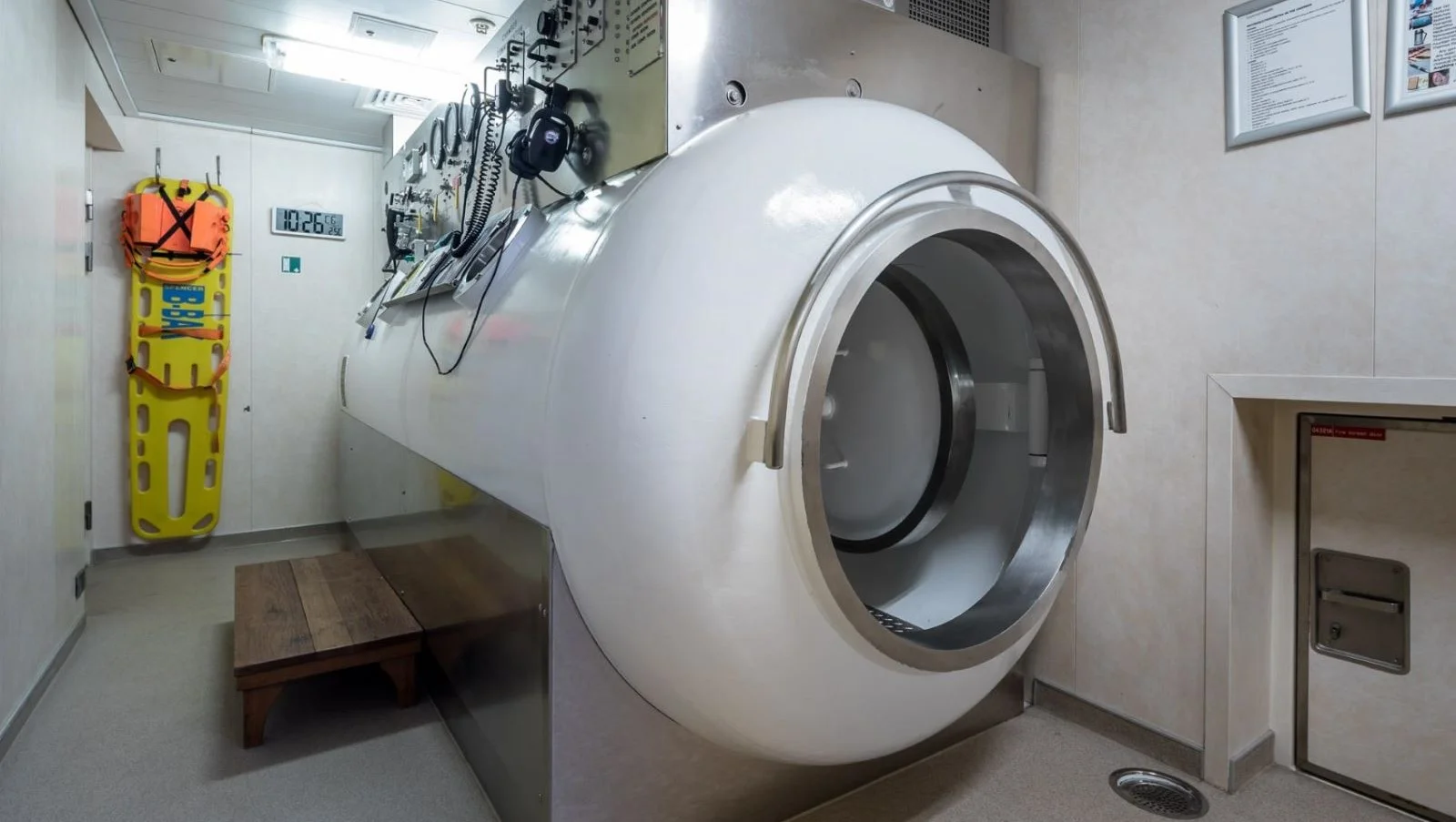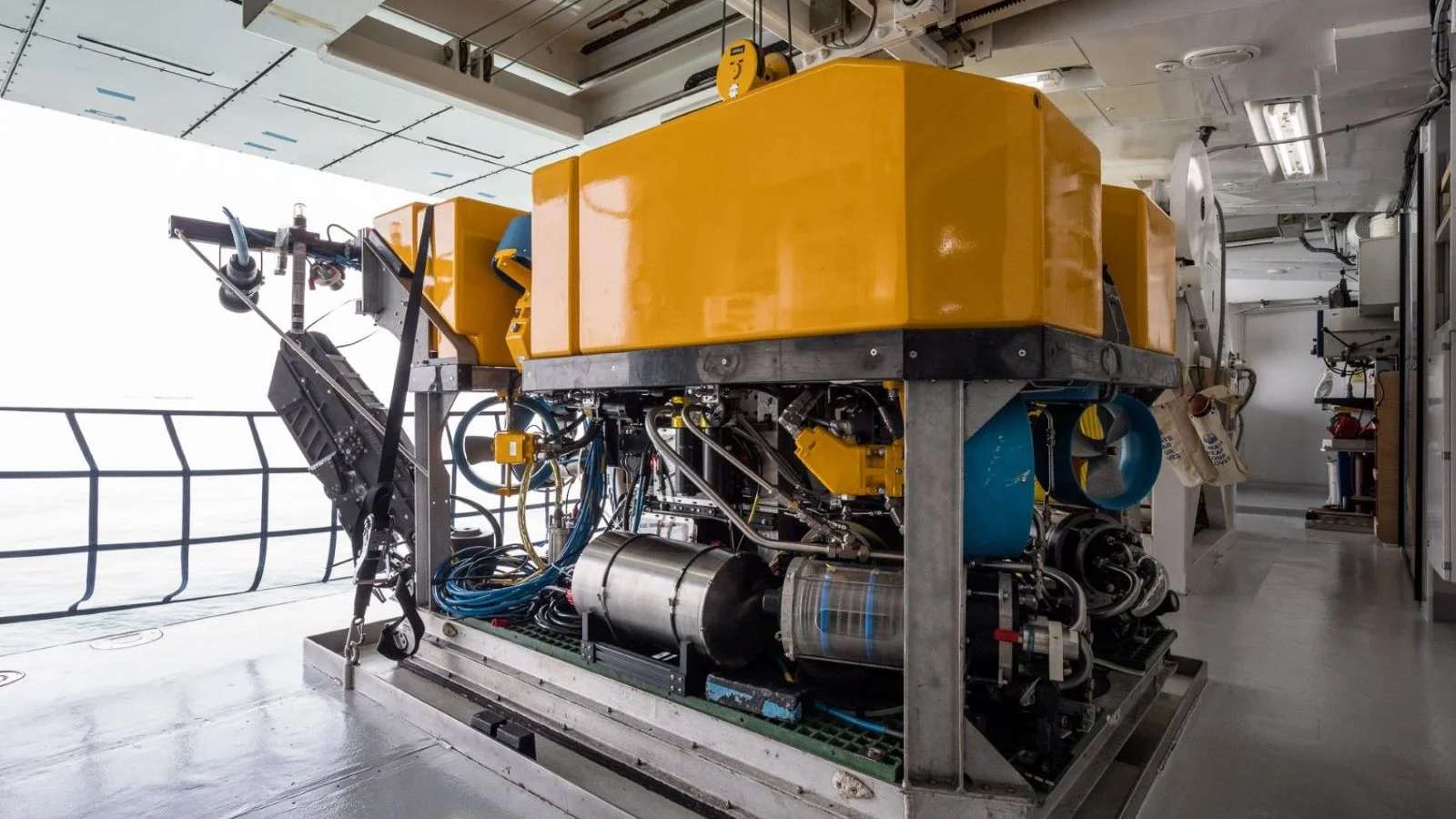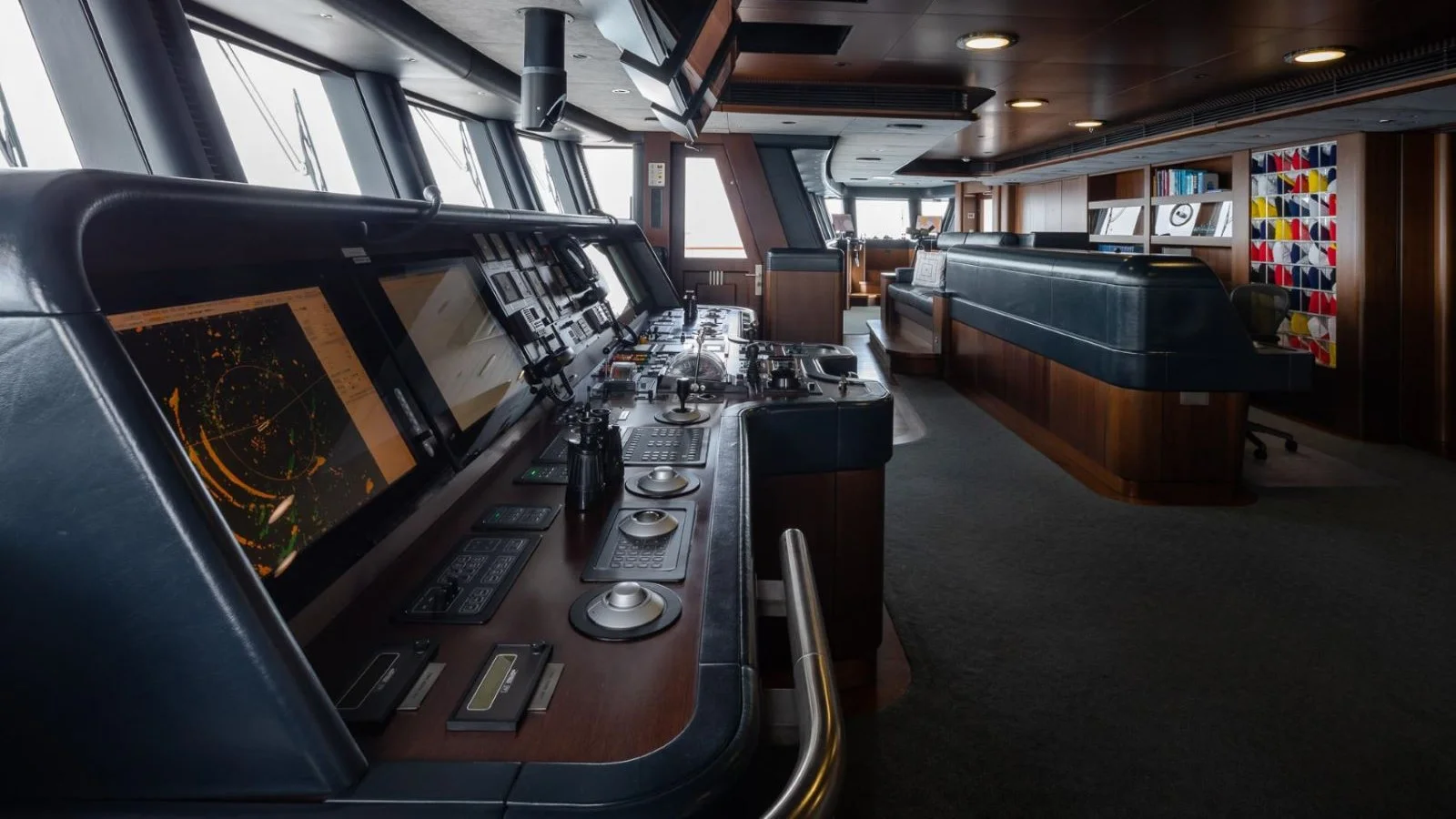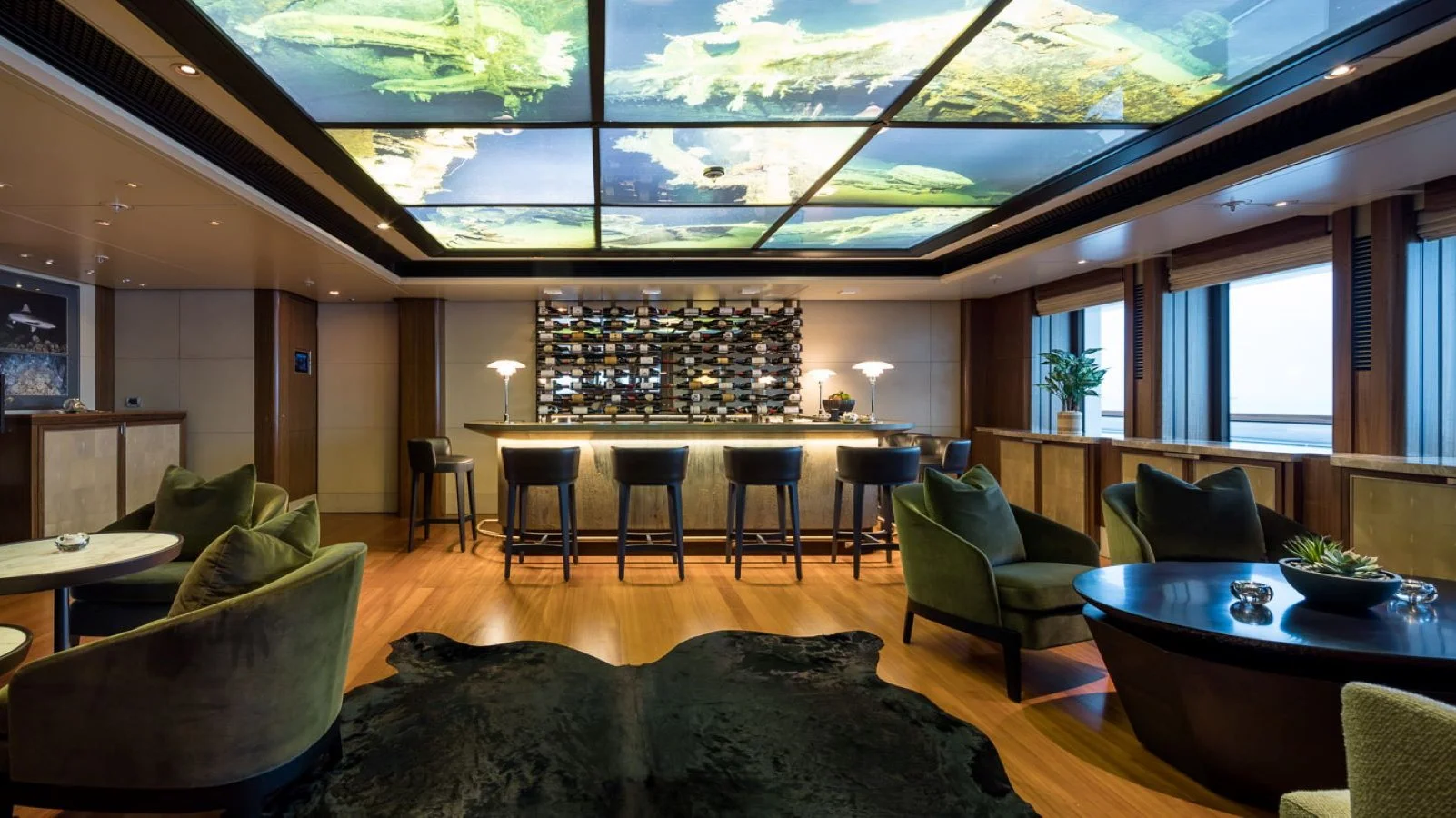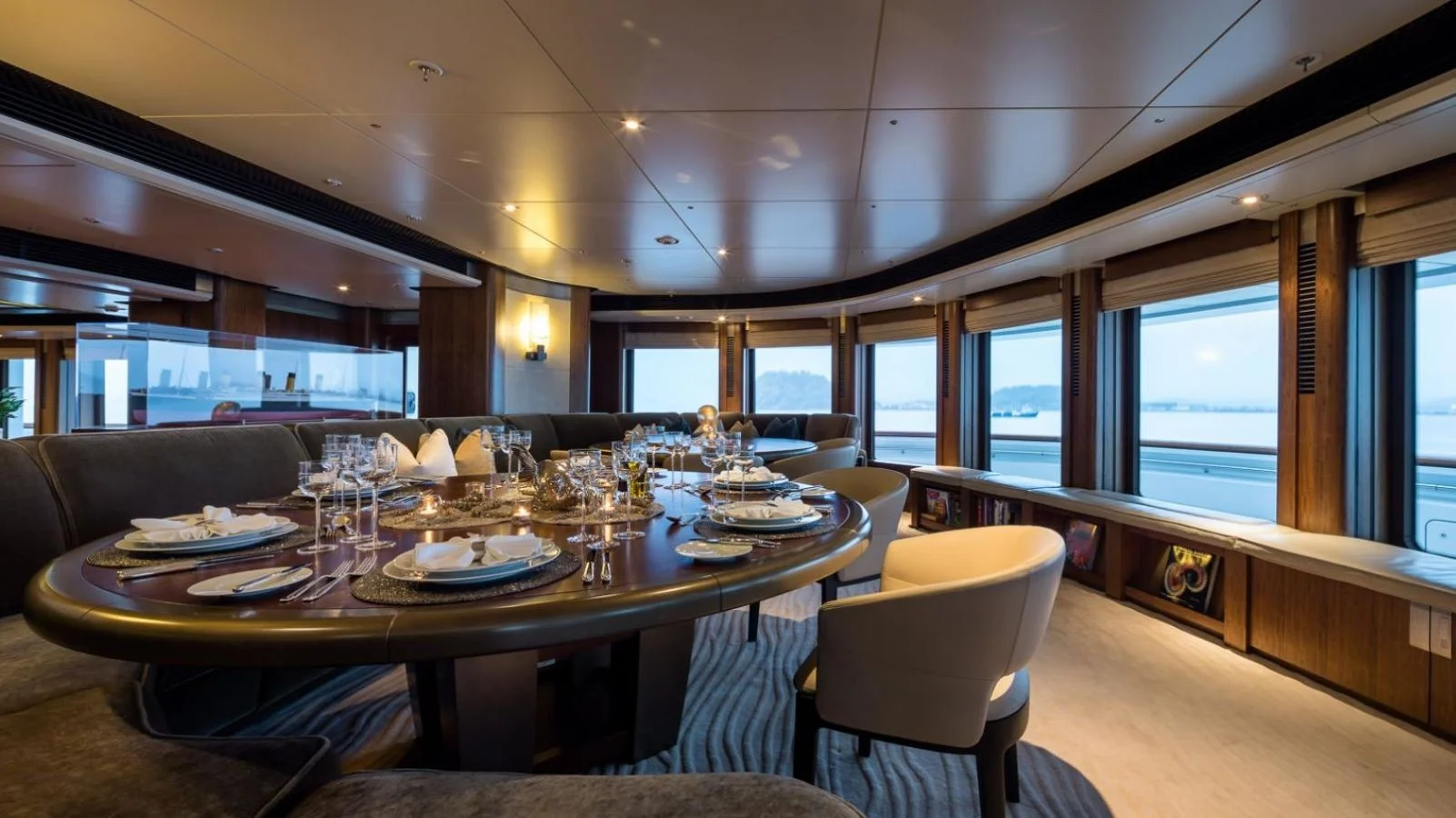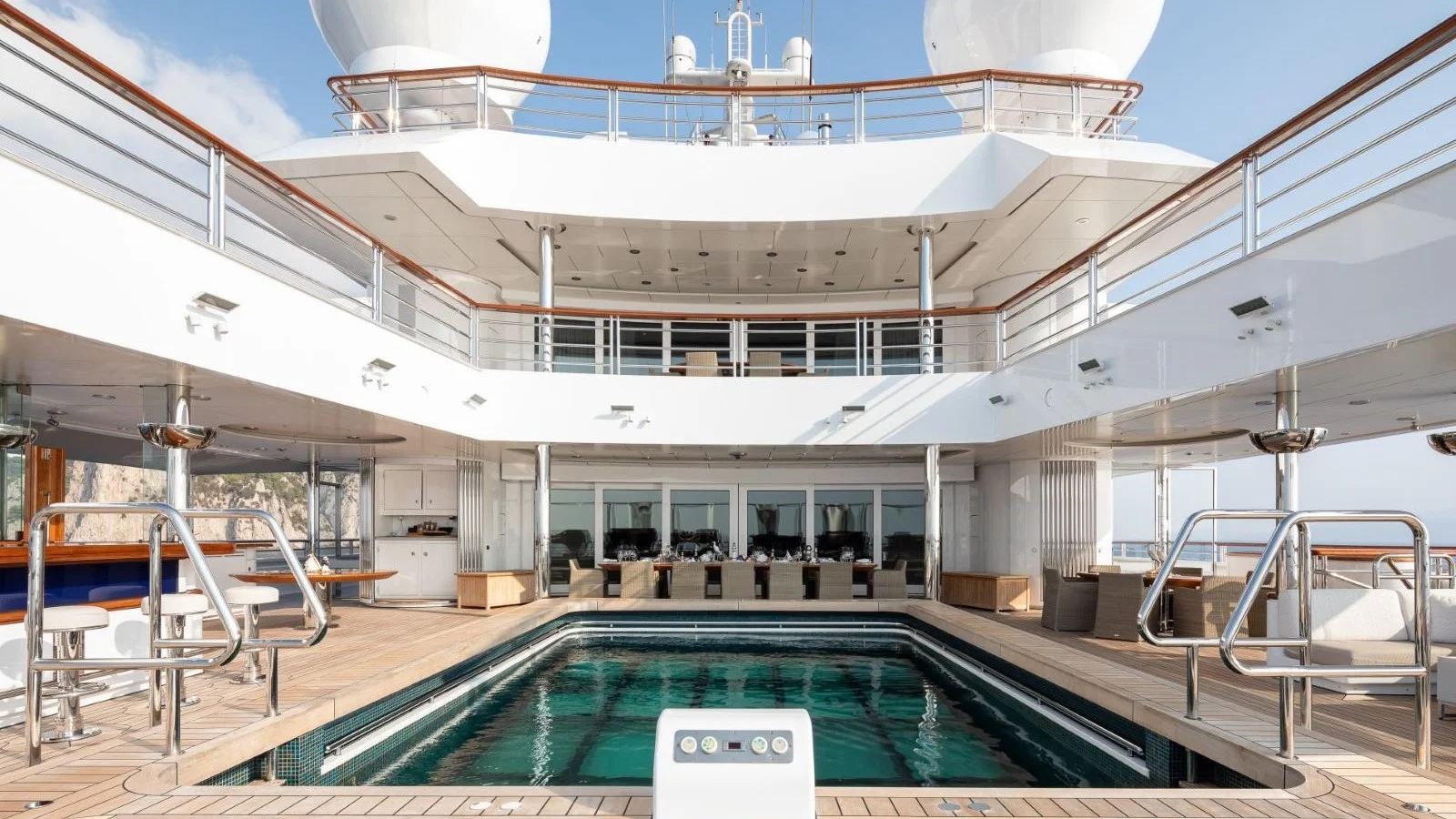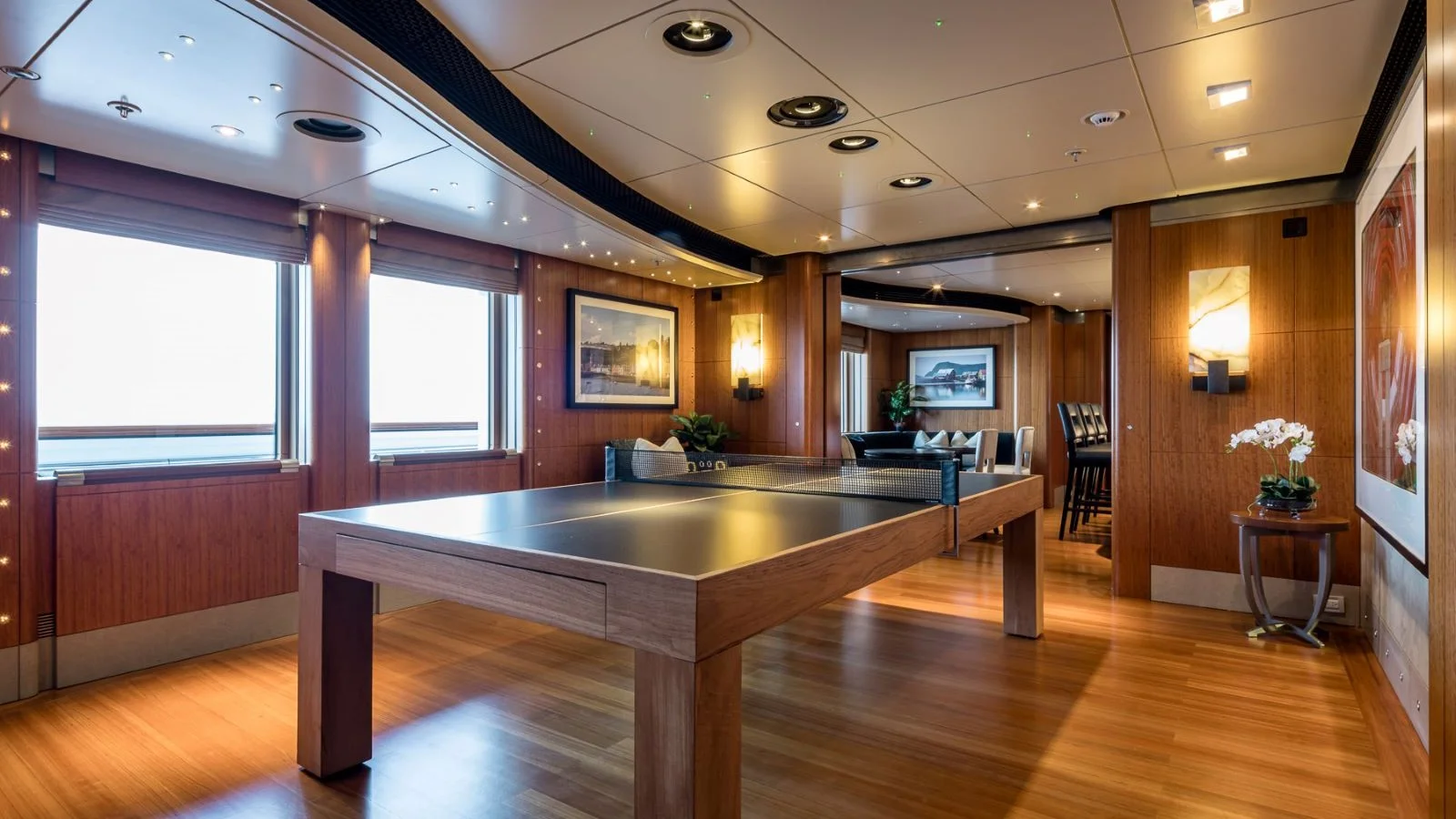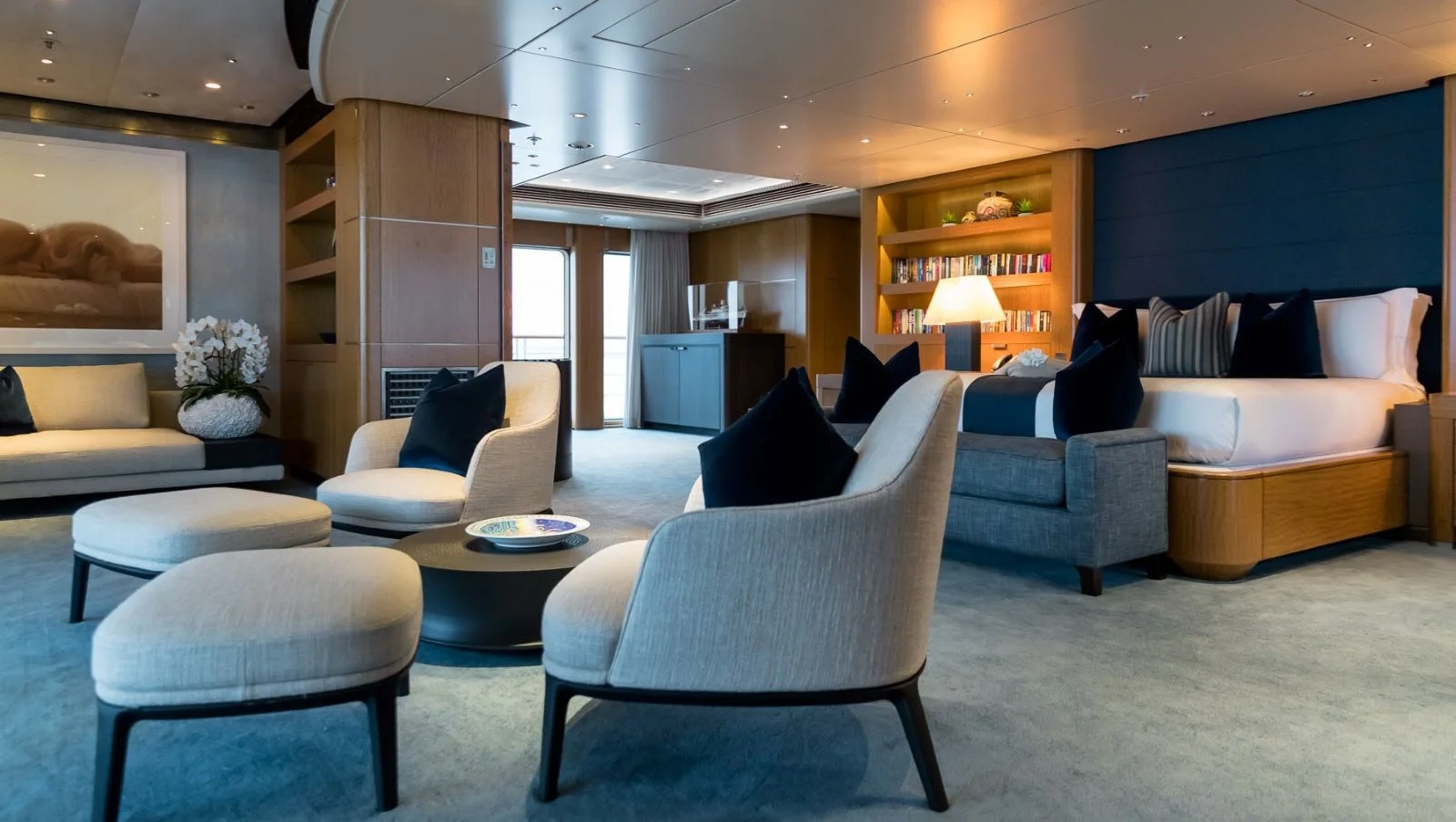
For two decades a veil of mystery covered the 126-metre Octopus, built by German Lurssen for Microsoft co-founder Paul Allen in 2003
Octopus was the world’s largest explorer at the time of her launch, and the herald of the new era for explorer superyachts capable of travelling to the ends of the earth.
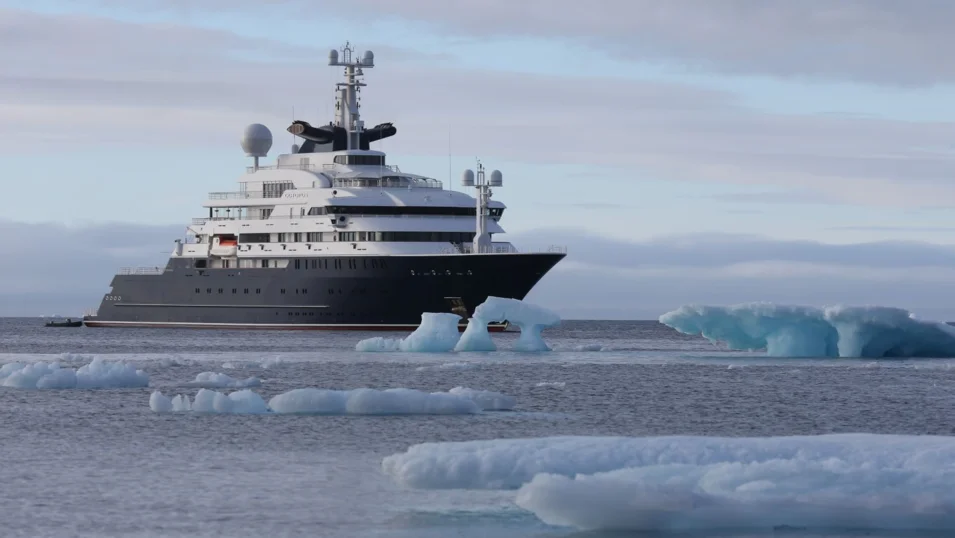
After Paul Allen passed away in 2018, Octopus went for a refit to Germany, and in 2021 she acquired a new owner (allegedly a Swedish pharmaceutical billionaire, Roger Samuelsson), who decided to make the boat available for charter – for the first time in her history. The charter fee starts from $2.2 mln per week.
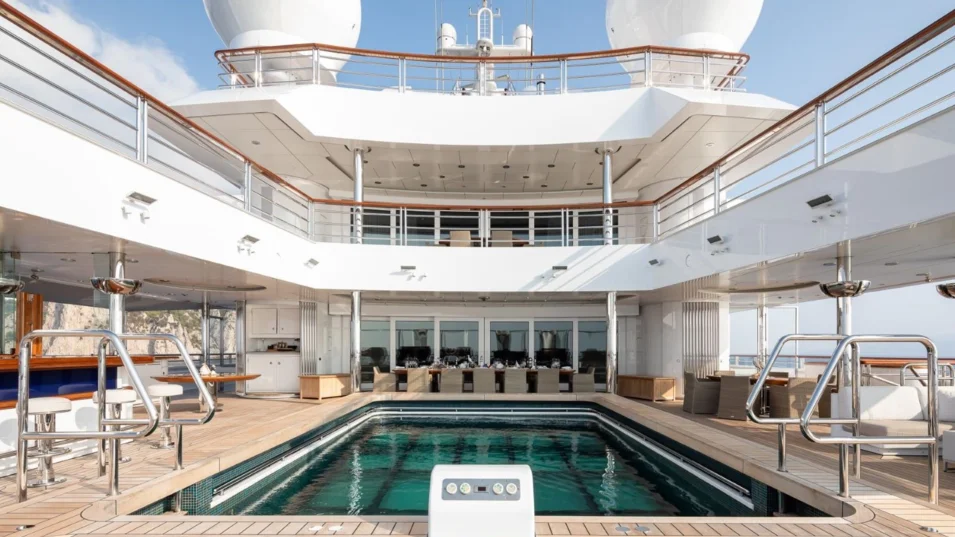
Over the first 19 years not a single scant detail leaked on what is there on board Octopus. All those involved in her creation, including designer Espen Øino and the original interior designer Jonathan Quinn Barnett, had signed the strictest non-disclosure agreement. And when it was allowed to break the “vow of silence”, the world could finally find out what is there inside one of the world’s most impressive yachts with an incredible “track record” of journeys to the most remote parts of the planet.
Design and engineering
Lurssen shipyard and Espen Øino got the project inquiry back in 1998, and they confess that it looked crazy. The customer wanted an industrial-style yacht with the appearance and capability of the Finnish multipurpose icebreaker Fennica, built in 1993.

Luckily, Espen Øino knew that vessel, as he had visited it before, so he quickly made some sketches in pencil for the first presentation, with a couple of versions of the bow and the wheelhouse. It might sound strange today, with all the possibilities of computer modelling, but don’t forget it was 1998! What is remarkable is that Øino’s original sketches are really close to what the vessel actually looks like. And her working name of Project Octopus (Paul Allen’s previous yacht was called Medusa) became her name after the delivery.
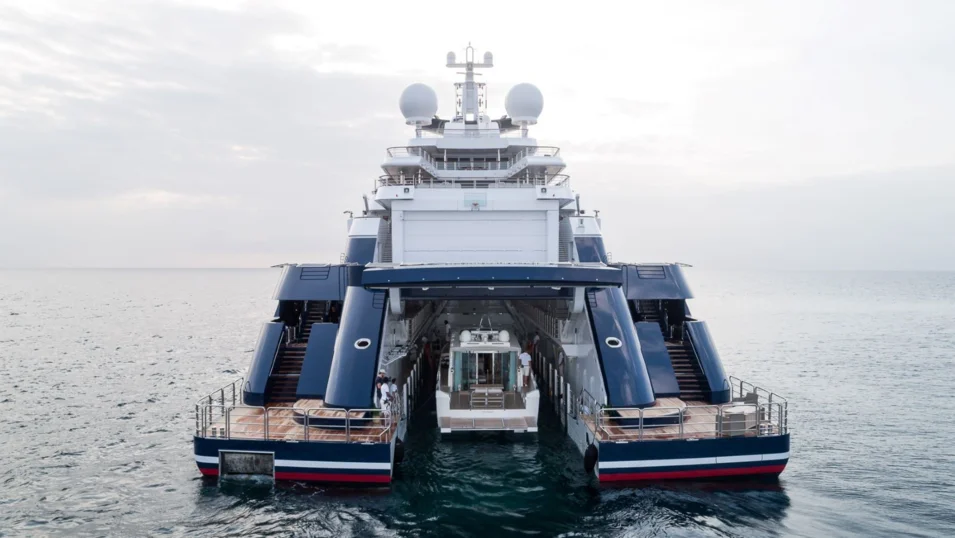
Another challenge was to accommodate numerous “toys” on board, including tenders, a submarine, a floatplane and a helicopter. And what is most important, none of them could be stored on open decks. In the end, they came up with a two-level float-in garage that opened at the stern. Initially the idea of putting so much equipment aft didn’t seem right: this kind of weight could affect the vessel’s stability and cause heeling. But Espen Øino thought of making it really long (36 meters!), locating it on the yacht’s centreline, flanked by rows of smaller garages for storing different toys.

The project got approved, but Lurssen faced a problem: they did not have a shed that could accommodate a boat of this size. In the end they had to build one. And to approve the unique garage construction, they had to build its scale model to be able to demonstrate how it was all going to work.
Interior
Octopus’ interior was entrusted to a young American designer, Jonathan Quinn Barnett, who created a “floating laboratory for a creative genius”. What is most interesting is that it features some things that are not often found on board even today: a fully equipped medical centre, a “storm cabin” for those who need comfort in bad weather, and even a professional recording studio, where U2, Mick Jagger and many other artists are said to have recorded their albums.
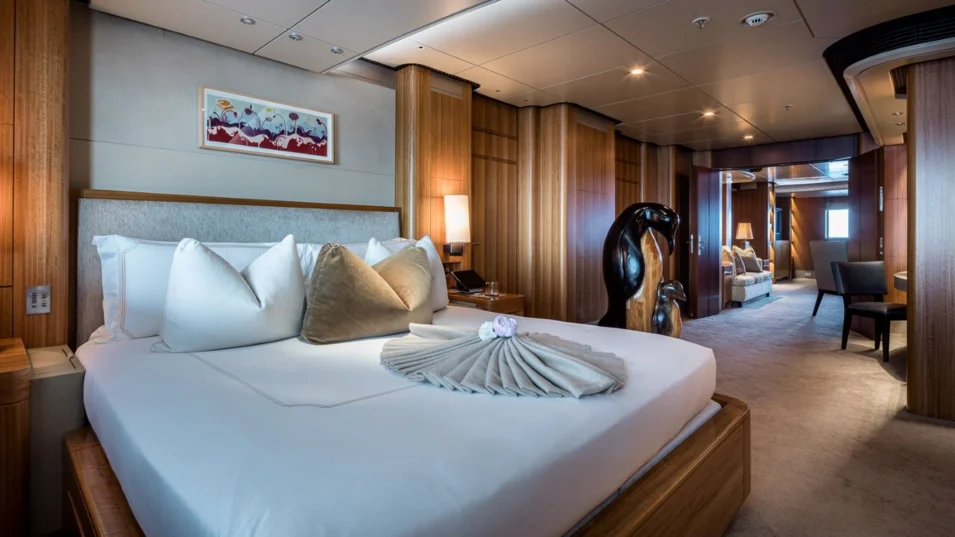
There are 12 guest cabins, crew quarters for 63 and a private owner’s deck with a lift, a spa pool, a dive centre with a hyperbaric chamber, two helipads and a basketball court.
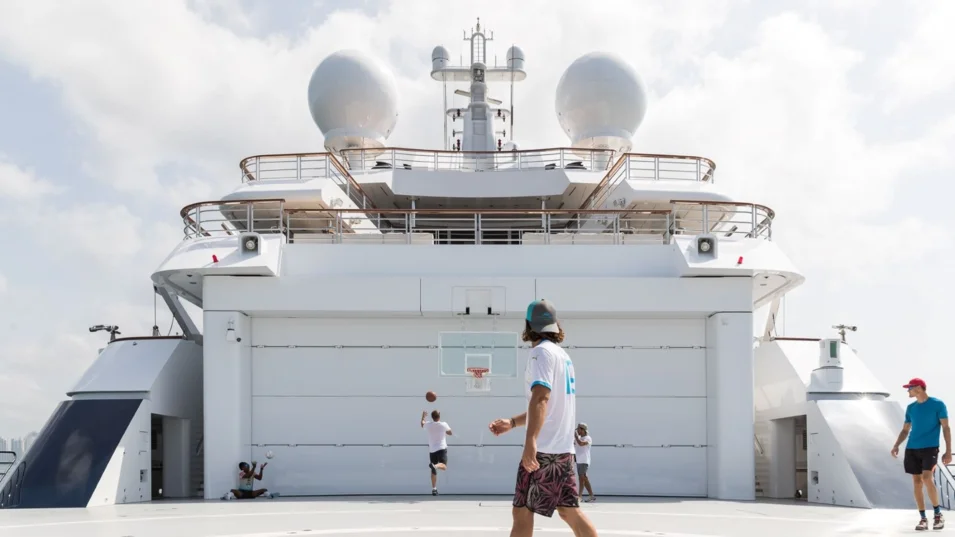
Barnett made the interior décor quite simple: some walls are painted neutral tones, while others are covered in bee’s wing-figured eucalyptus. “It’s this vast amount of wood panelling that gives the hardy explorer the warm, comfortable feeling of a home. And the geometry of the panels is elegant mathematics, something Mr Allen really appreciated,” Barnett said. Besides, the walls feature snapshots of Octopus’s adventures over the years: from Patagonian icebergs to Asia’s ancient golden temples.
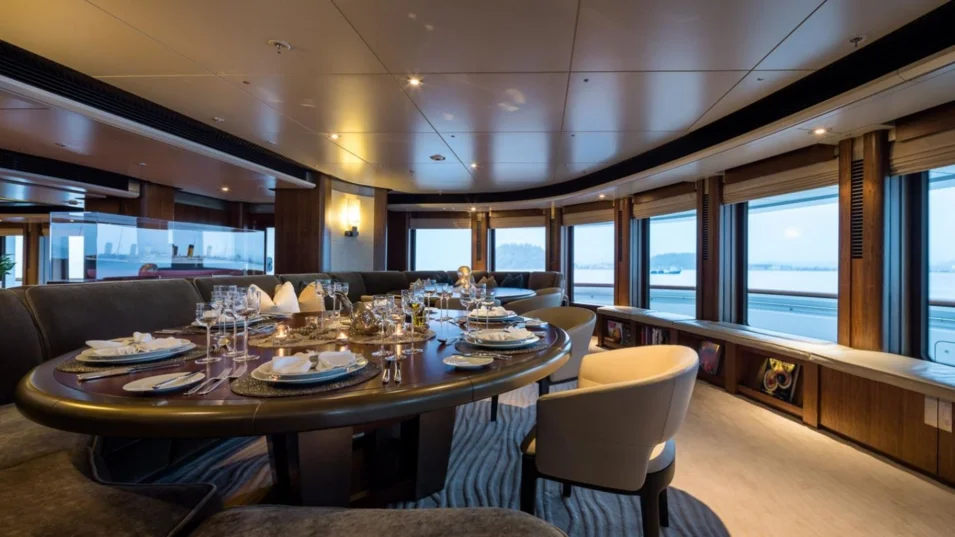
Travels
Octopus is one of the most actively travelling superyachts in the world. She has already gone on numerous round-the-world voyages, went through the Northwest Passage, to the Arctic, Antarctica, Papua New Guinea… One of Paul Allen’s hobbies was naval history, and some of Octopus’ voyages got wide publicity due to the discoveries he made. Thus, in March 2015 after seven years of search Paul Allen announced he had found the Japanese war battleship Musashi that had sunk in the Philippines in 1944.
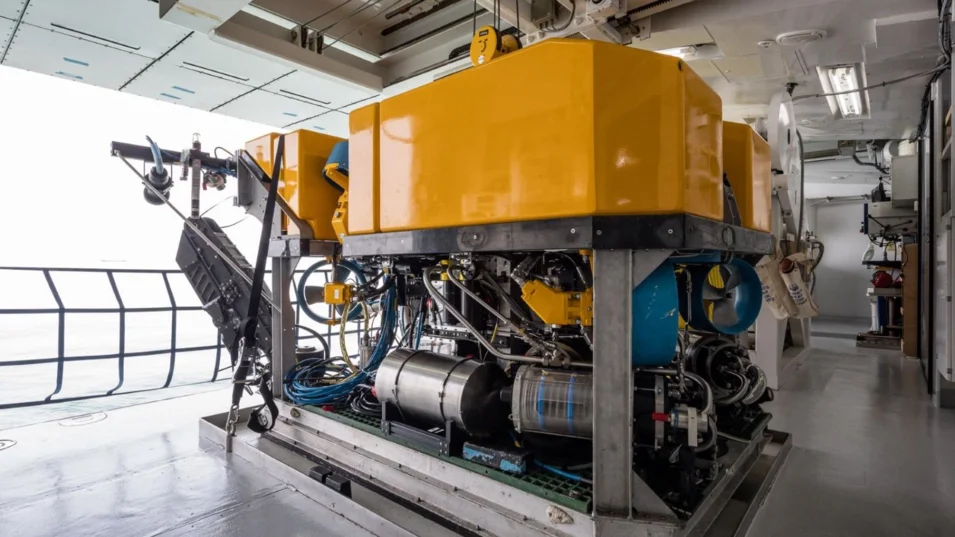
The remotely controlled submarine, OctoROV, made the first photos of the discovery at the depth of 1000 metres. In August of the same year another expedition raised the bell from the British battle cruiser HMS Hood sunk by the German warship Bismark in the Battle of the Denmark strait in 1941.
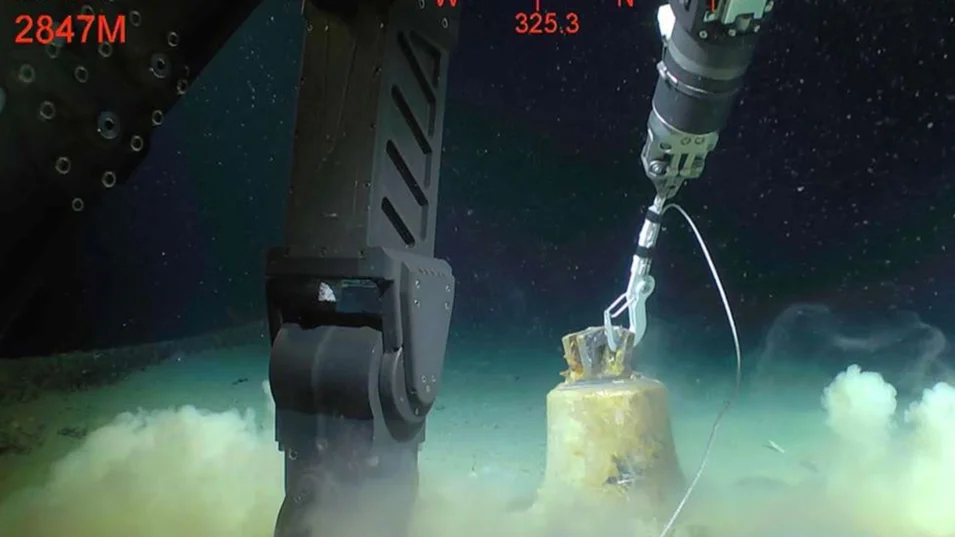
Equipment and onboard systems
Even at the time of her launch it was clear that Octopus was opening new horizons of travel opportunities. The yacht was equipped with a diesel-electric propulsion system of eight diesel MTU engines with a total power of almost 20000 hp and two electric ABB motors.
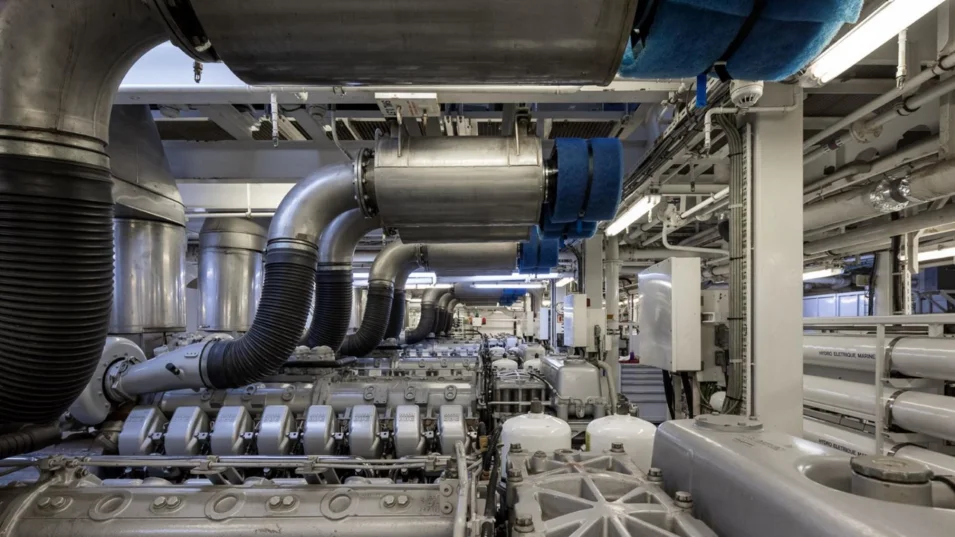
This kind of hybrid solution was not common practice at the time. All this power allowed Octopus to reach a top speed of 19 knots and have a range of up to 12500 nautical miles, which is incredible even today! Besides, Octopus became the first yacht to boast dynamic positioning, which maintains the vessel’s position without dropping anchor, which is particularly relevant in protected marine areas.

Octopus was also fitted with an incredible amount of onboard electronics: Microsoft co-founder required over 54 tonnes of AV and IT equipment on board. The largest part of the cables certainly went to the recording studio, but there were 60 cables in each cabin, too, for computers, entertainment systems and many more. There were even touchscreens, which was simply astonishing for 1998.
Toys
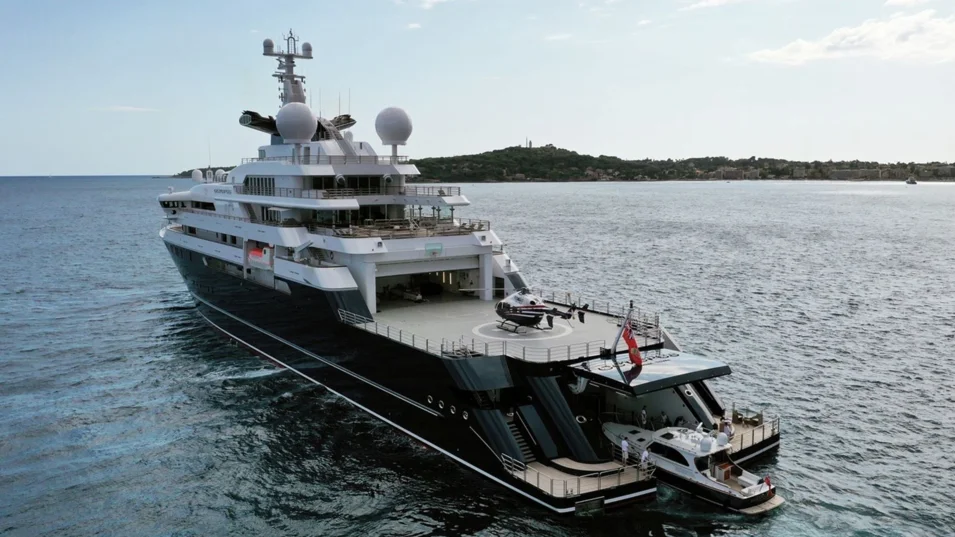
Octopus, which was created for research, has incredible “small fleet” of her own, stored inside the 36-metre garage. The main tender is launched through the giant transom door: today it is an 18-metre Delta 54 built of carbon with a range of 450 nautical miles at a speed of 30 knots. Originally it was a Man-of-War: an 18-metre custom Vikal. Next to it there is a “yellow submarine” named Pagoo, capable of spending up to eight hours under the water with eight passengers and a crew of two on board.
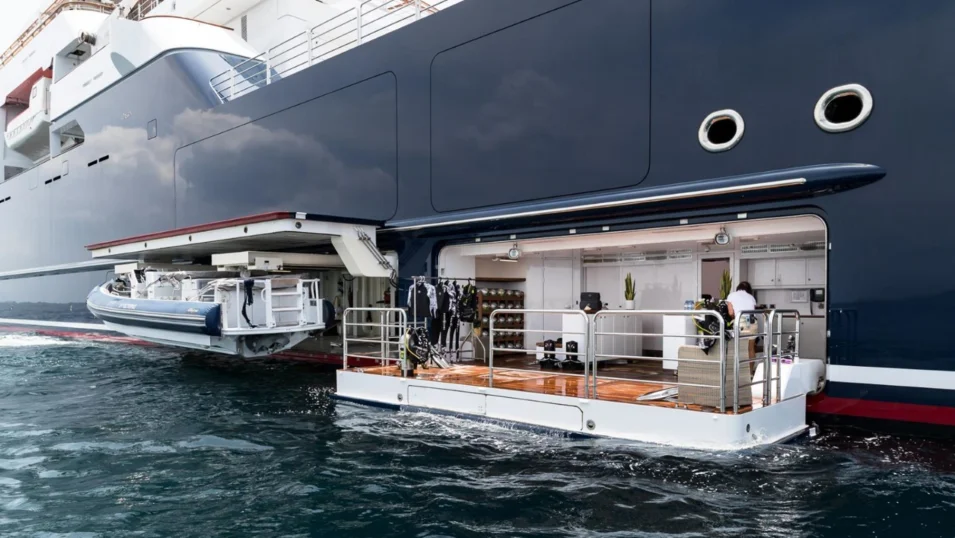
Then there are garages for smaller tenders: for the guests, for diving, for water sports. There are also lots of jet skis, kayaks, surf boards, kite boards, electric foils and other toys. The cherry on top of the cake is a remotely controlled submarine (ROV) able to go down to 2700 metres. And to conclude this amazing list there is a helicopter hangar for two units.
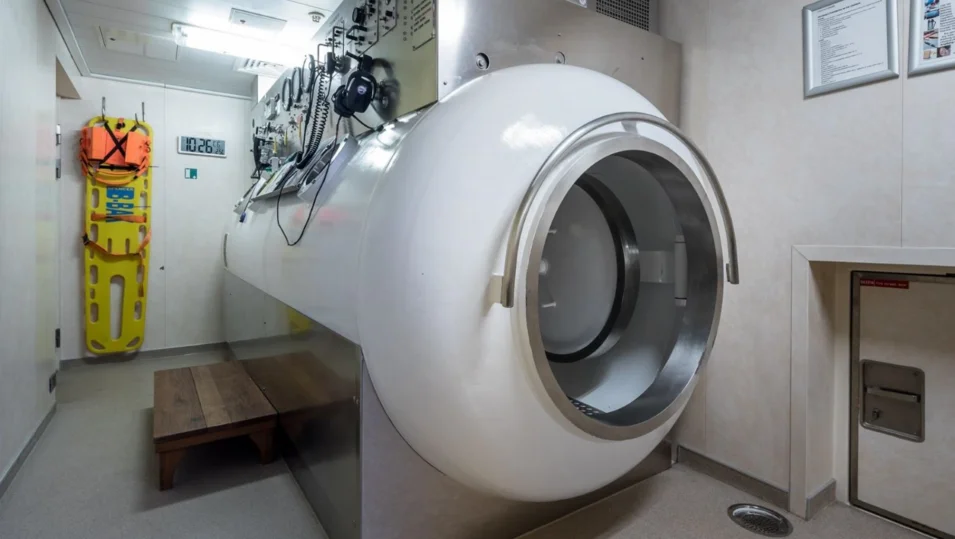
Refit and Octopus’ new life
After continuous travels Octopus’ engines had to be overhauled. However, the interior finish did not require any serious repairs. Only in 2019, after Paul Allen’s death, the yacht was sent for her first big refit – just to prepare her for the sale, as everything on board was maintained in perfect condition.

The new owner’s plans to turn Octopus into a unique charter yacht required some more changes, and that is why he turned to Adriana Monk (Monk Design). It is a pity, but the first point on the list was the recording studio that had to be replaced with something more practical. Now there is a modern bar with a lounge area instead. However, the grand piano remained where it was, and there are new guitars hanging from the original wall mounts.
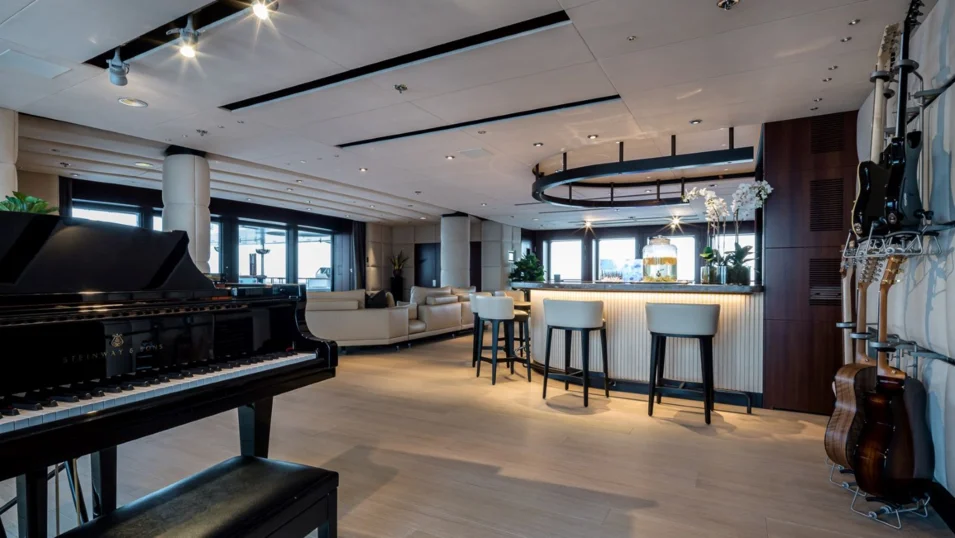
There is also a Dj booth instead of the vocal one, and as the studio’s soundproofing remained unchanged, a decision was made to turn it into a party area: at one touch of a button a pool with a glass bottom turns into a dance floor.
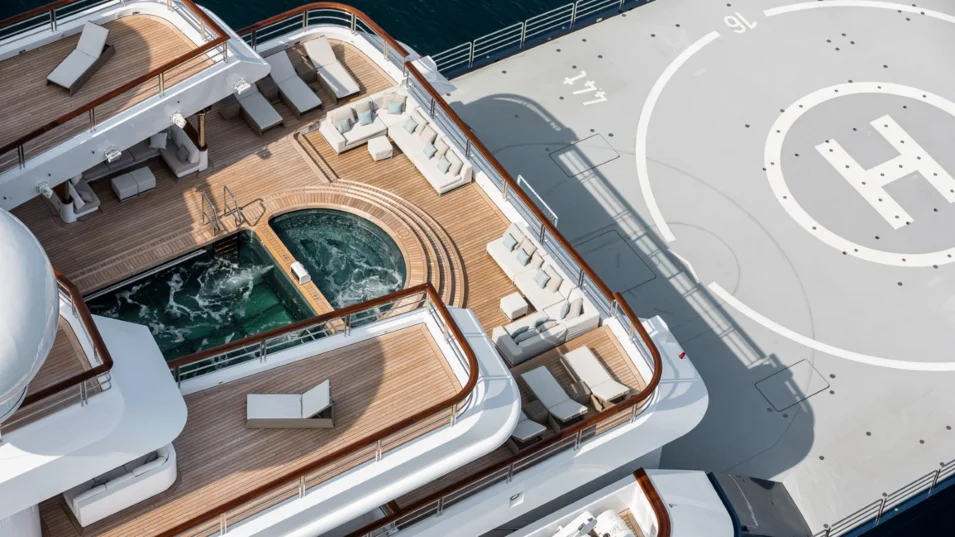
The entertainment deck houses a former formal dining room that was turned into a wine bar. The backlit ceiling features the scenes from Paul Allen’s 2015 shipwreck dive to the battleship Musashi.

There is an observation lounge with a panoramic view nearby. The deck is also home to a 12-seat 4D cinema, the chef’s galley, a table-tennis table, a gym, a smoothie bar, a hair and massage salons, as well as a library with an ethanol fireplace.
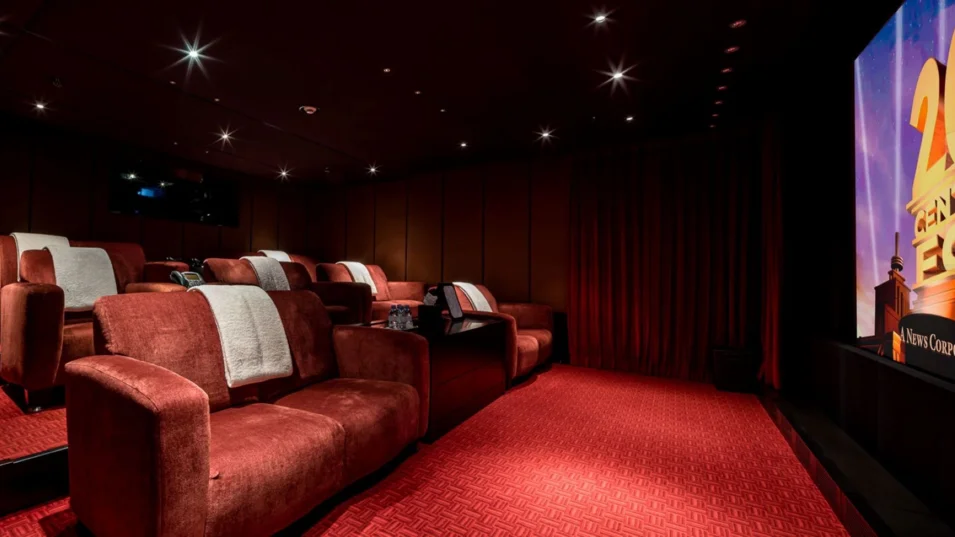
Some free-standing items of furniture have been added to make the orogonal interior more suitable for Octopus’s new charter lifestyle. However, there have been no radical changes and the original feel of the yacht has been preserved. “I strove to respect the spirit of Octopus while capturing the new owner’s lifestyle and vision,” said designer Andriana Monk.
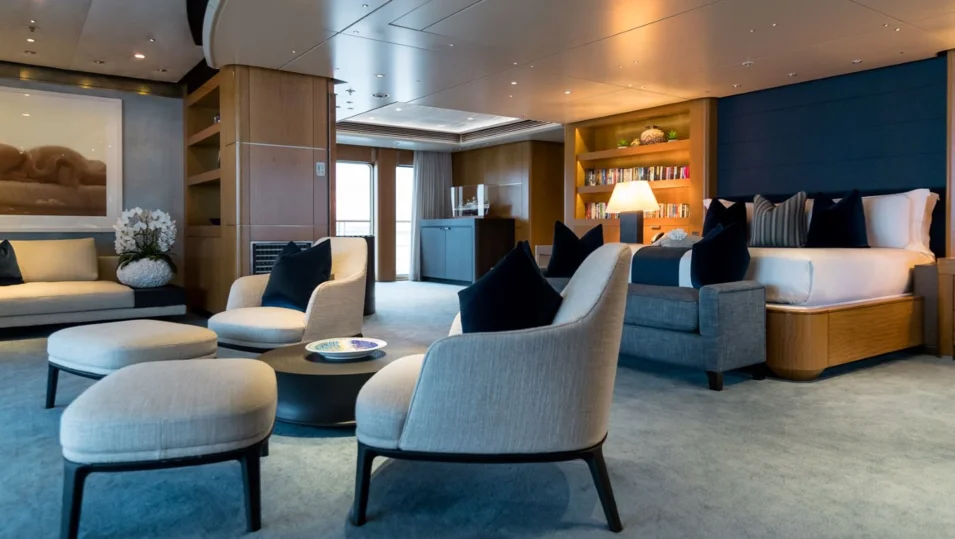
Another original feature of Octopus that is still on board the yacht is an unusual time-piece. Braided stainless-steel shrouds from a sailing boat are strung on both sides of the grand staircase from the lower to the upper deck. The interior designer, Jonathan Quinn Barnett, decided to combine the old tradition of having a central clock on board with Paul Allen’s passions for sculpture, music and mathematics. For this goal he subcontracted a German specialist clock company that has existed for over a century. This “string clock” can play any melody every 15 minutes.
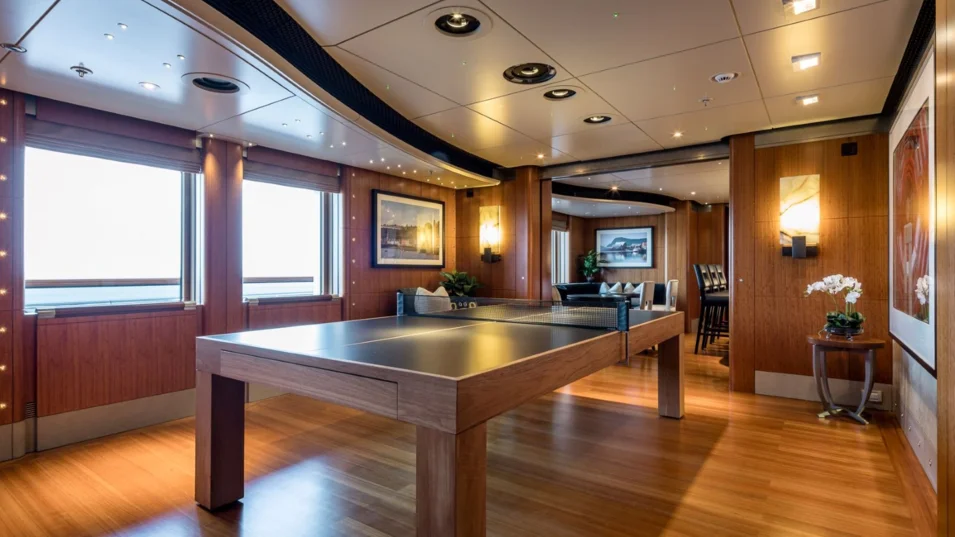
According to Camper & Nicholsons, who are managing the yacht now, the demand for Octopus is equal to her renown. Today a lot of modern superyachts are capable of impressive expeditions to the ends of the earth, but so far none of them has achieved what Octopus has. Everyone who steps on board this iconic yacht is sure to remember it for the rest of their lives.
You have successfully subscribed to our newsletter
